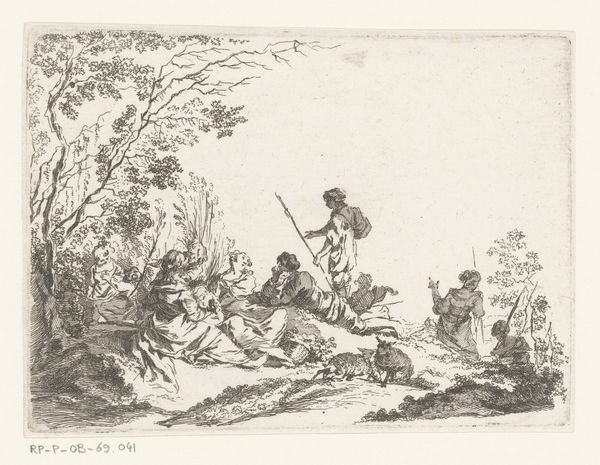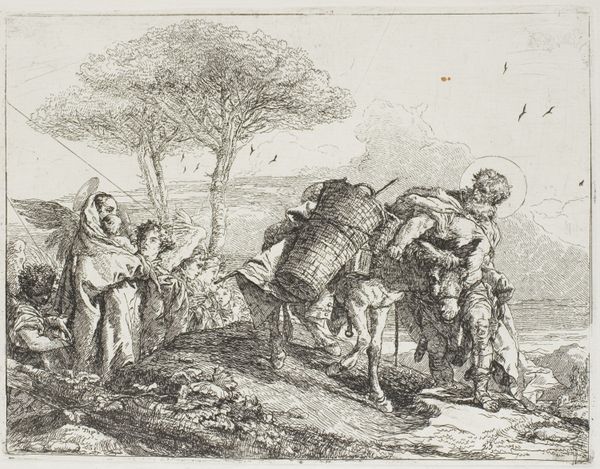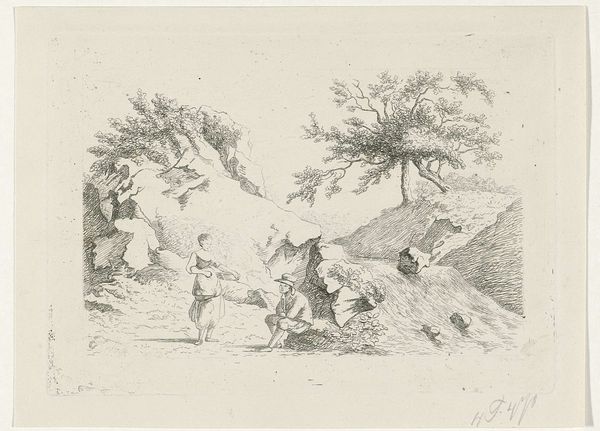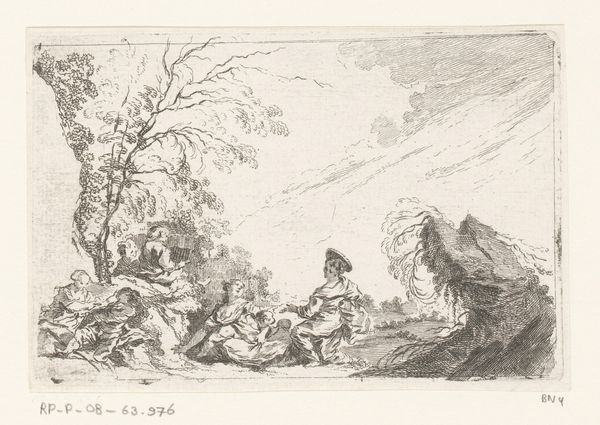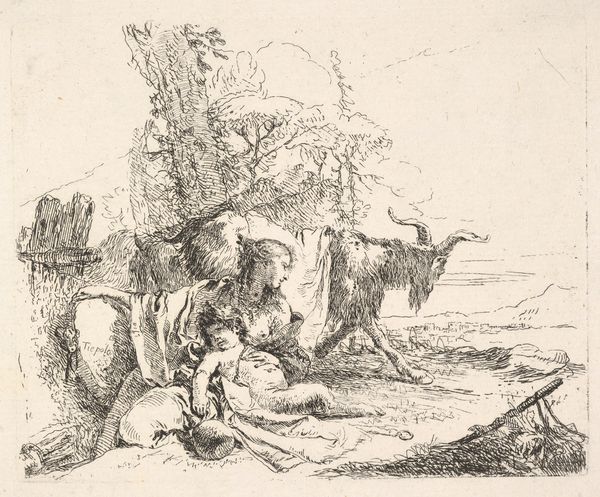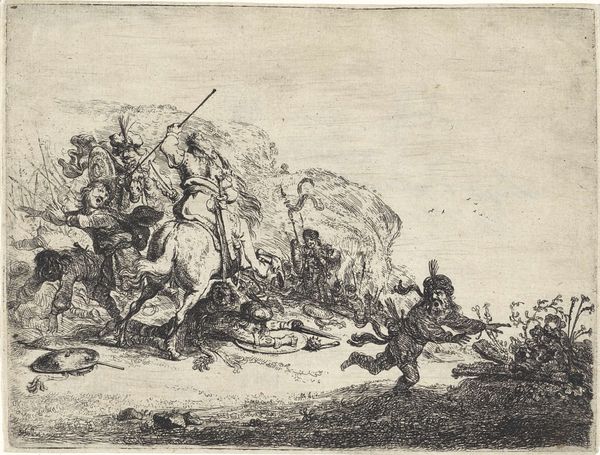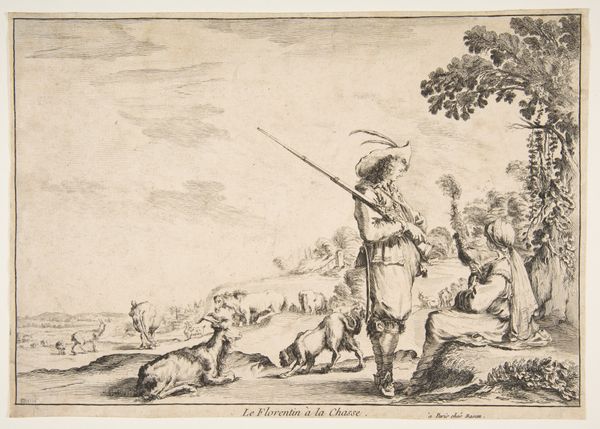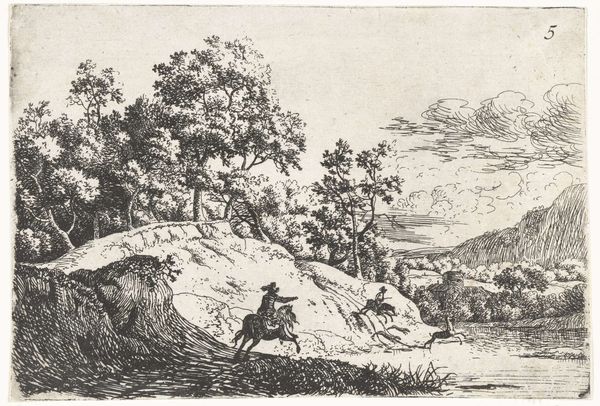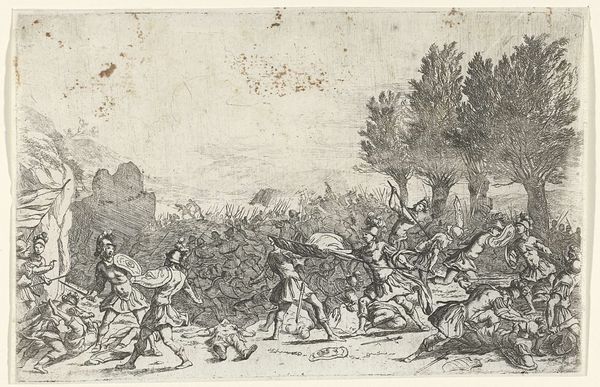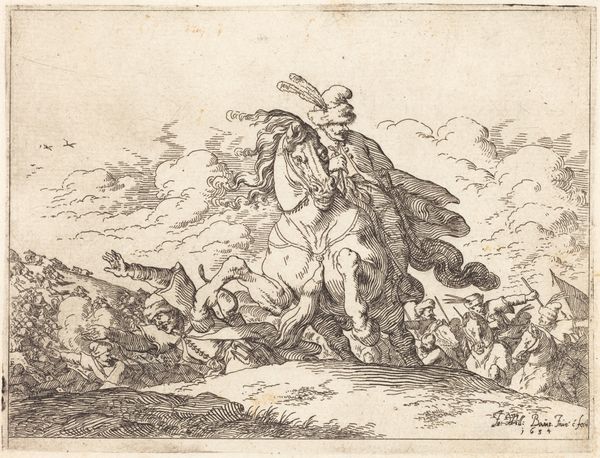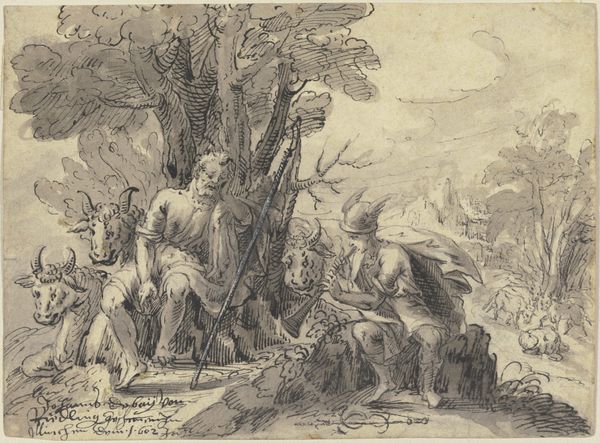
drawing, print, etching, ink, pen
#
drawing
#
ink drawing
#
pen drawing
# print
#
etching
#
landscape
#
ink
#
romanticism
#
pen
#
genre-painting
Copyright: National Gallery of Art: CC0 1.0
Curator: This is Franz Joseph Manskirch’s "Horse and Cart in Quarry," an etching from 1806. It’s rendered in pen and ink. Editor: I find this scene charming, though its rough lines almost create a sense of melancholy. The landscape has this rugged, unfinished quality that feels simultaneously pastoral and…strained? Curator: It’s interesting you pick up on that strain. Genre paintings of this era often romanticize labor. However, Manskirch, by situating this work within the broader context of the Industrial Revolution, reminds us of the human and animal toll of resource extraction. The horse and cart are literally laden with the weight of industry. Editor: And what’s remarkable is how he achieves this tension formally. Look at the deliberate juxtaposition of delicate linework in the background hills versus the denser, almost frantic scribbles detailing the vegetation in the foreground. It creates spatial recession but also unease. Curator: Precisely. Consider also the worker. He's leaning on his stick; even his small dog looks exhausted, furthering an understanding of labor and class during the period. They're a part of, but also dwarfed by, this industrial process. There is little joy evident in this genre scene. Editor: Though the seemingly effortless and transparent nature of the line work in the scene invites careful study; he uses visual weight to subtly suggest an allegory of exploitation. Curator: Agreed. Also, notice the almost hyper-detailed rendering of the natural elements alongside the comparative lack of detail in the human figures, especially those quarry workers to the back and left. It is as if nature will remain after the extraction. It endures even as people labor. Editor: It also encourages a critical reading. Manskirch shows us how visual codes can normalize unequal conditions, while at the same time challenging us to remember to interrogate what such imagery means outside the art world and into reality. Curator: And to remember that art isn’t created in a vacuum. Historical, social, and economic forces are always at play, whether explicitly or implicitly. Manskirch helps us decode that. Editor: Well, this artwork shows that we can understand not only the surface, but that art invites a broader critical reflection of the power dynamics influencing both the subject and the maker.
Comments
No comments
Be the first to comment and join the conversation on the ultimate creative platform.
